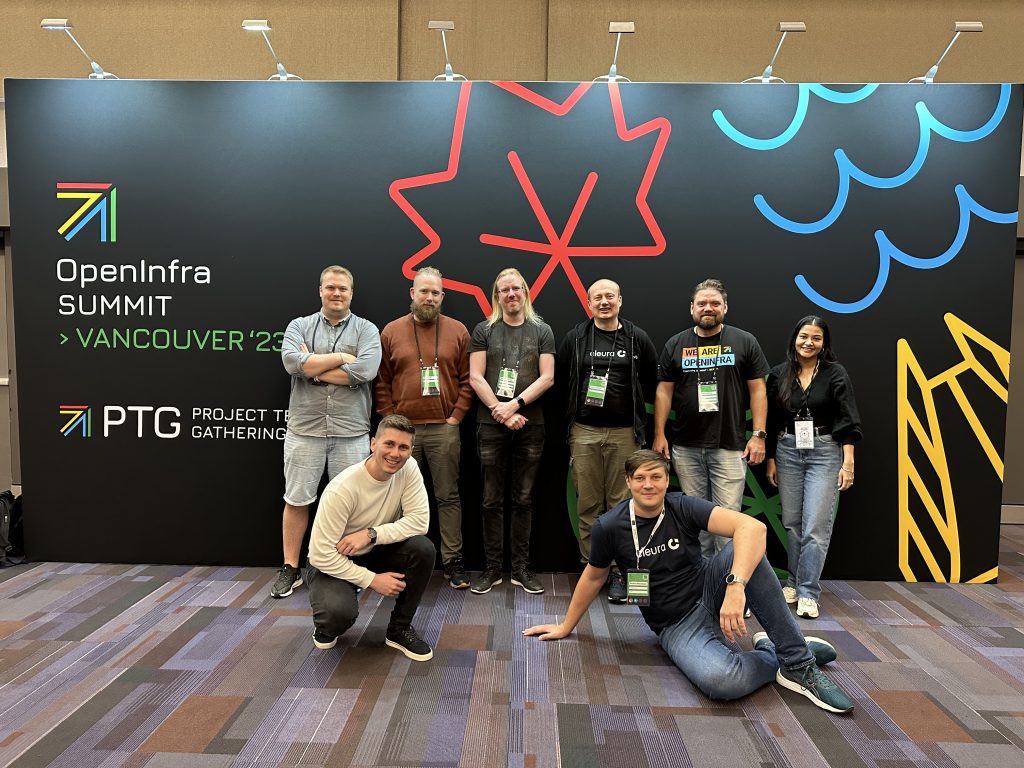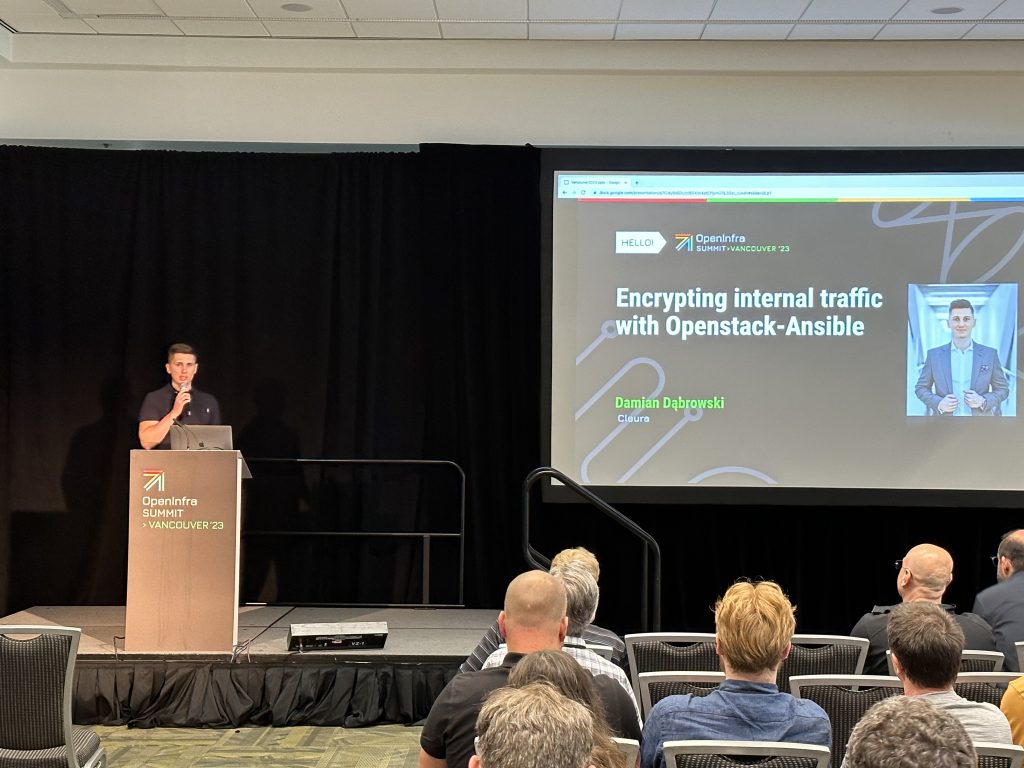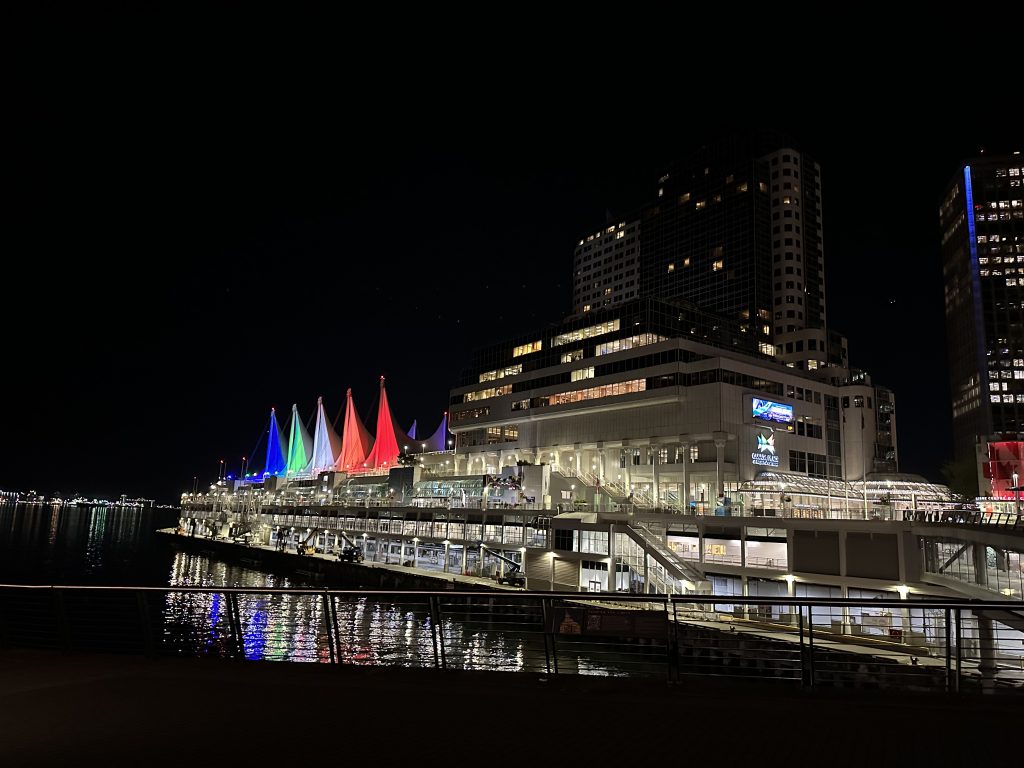Vancouver Diaries: Reflections from the OpenInfra Summit 2023
The much-anticipated OpenInfra Summit 2023 has already come and gone in the stunning city of Vancouver!
Last week brought a wealth of intriguing discussions and revelations. The Summit began with a soft start on Monday with the OpenInfra board meeting. One of the distinctive aspects of this community is its openness; everyone is welcome to participate in these meetings, which exemplifies their commitment to “the 4 opens“. It’s always fascinating to gain insights into the strategic discussions that shape the OpenInfra Foundation and its activities.
Some of my highlights from the Summit includes a captivating discourse with the Technical Committee, where they presented their focus areas, current challenges, and future directions. Managing a complex project like OpenStack – with diverse teams developing various aspects of the cloud operating system – is undeniably demanding, and coordinating releases and determining the contents of each release is crucial to the project’s advancement. It underscores the necessity for exceptional collaboration across all teams.
Interoperability is another critical topic that we deem vital for OpenStack, Cleura, and our clientele. This responsibility lies with the Interop Working Group, appointed by the OpenInfra board. They employ tools like Refstack and Tempest, essentially a suite of tests that ascertain your infrastructure’s functionality, particularly in responding accurately to API calls. The discussion revolved around making this even more user-friendly, possibly enabling end-users to run these tests independently, thereby vetting providers to ensure their workloads function as expected in an OpenStack environment. This approach could prove immensely beneficial for end-users.
Damian Dąbrowski, a renowned figure from the Cleura team, delivered a compelling presentation on the deployment tool we utilize – OpenStack-Ansible – and our transition into supporting internal traffic encryption, executed entirely upstream. As did Dmitriy Rabotjagov and Namrata Sitlani who did a project onboarding for OpenStack Ansible and an Open edX case study, respectively. We hope the videos will soon be available for everyone to view.
As usual the event as a whole offered valuable insights into market trends, innovative use cases across diverse industries, and more. Of particular interest was demonstrating a new driver for OpenStack Magnum, utilizing a CAPI (Kubernetes Cluster API). Thanks to the benevolence of the demo gods, we were treated to an impressively seamless demonstration of creating and managing Kubernetes clusters using Magnum – a promising development indeed.
Lastly, I want to thank the entire team for their contributions and engagement during the Summit. Each member did an outstanding job sharing their expertise and passion, helping to make the event truly memorable. I am very proud of our impact on the discussions throughout the Summit and urge everyone to watch our presentations to gain invaluable insights into our work and the future of Open Infrastructure.
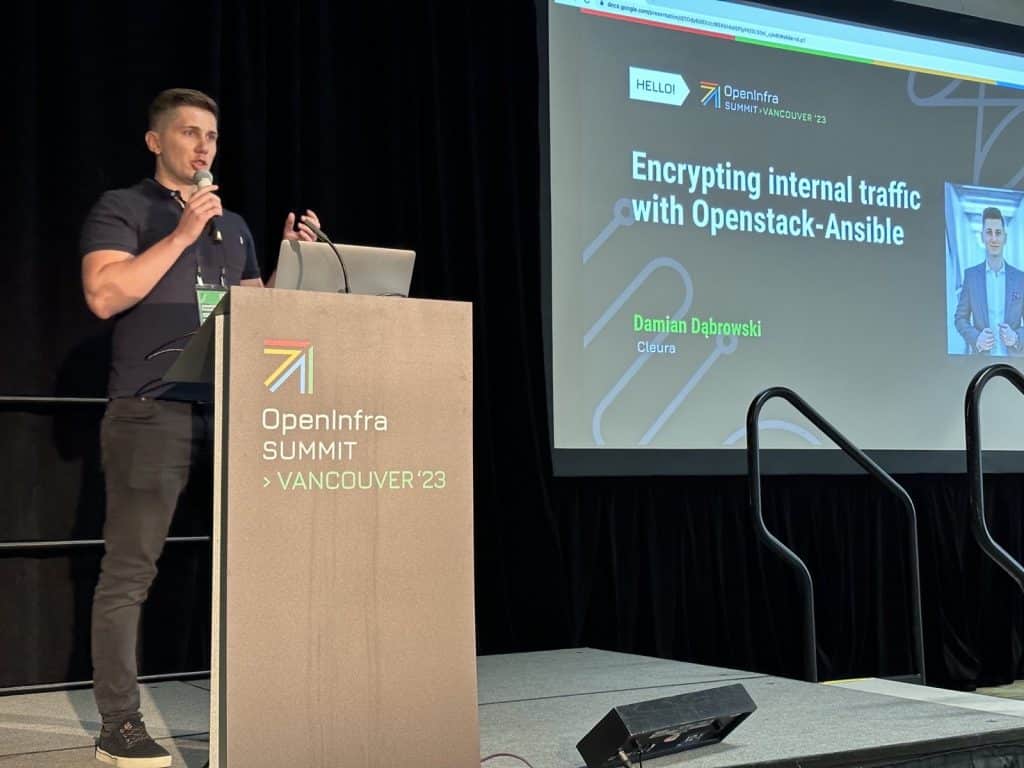
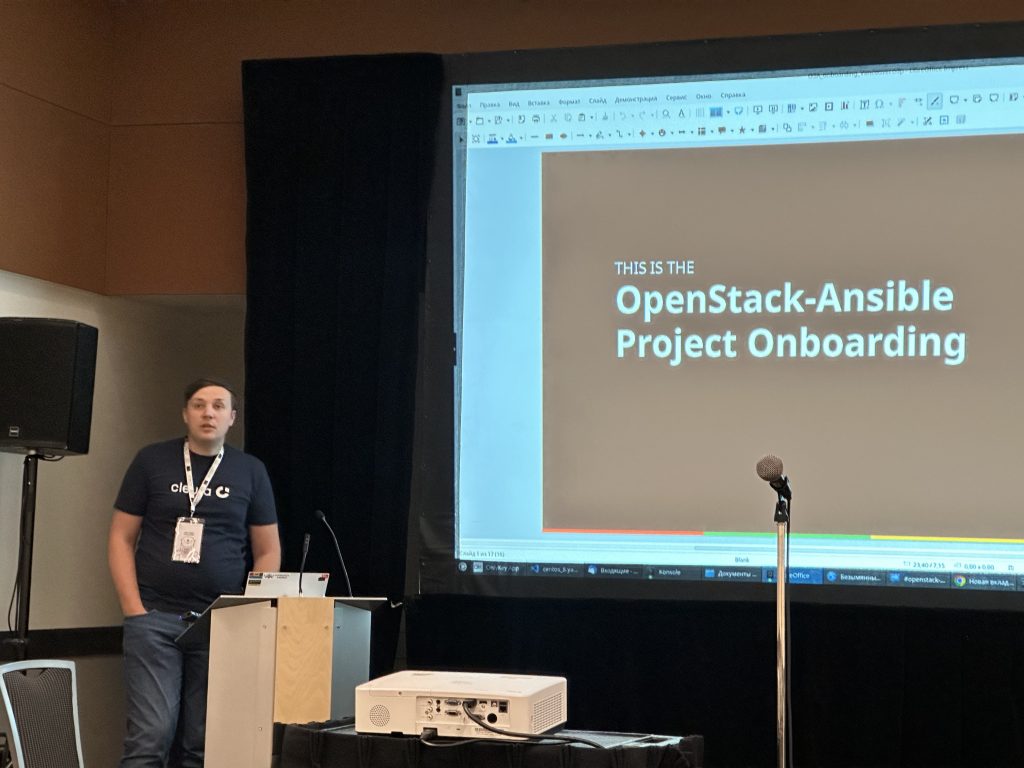
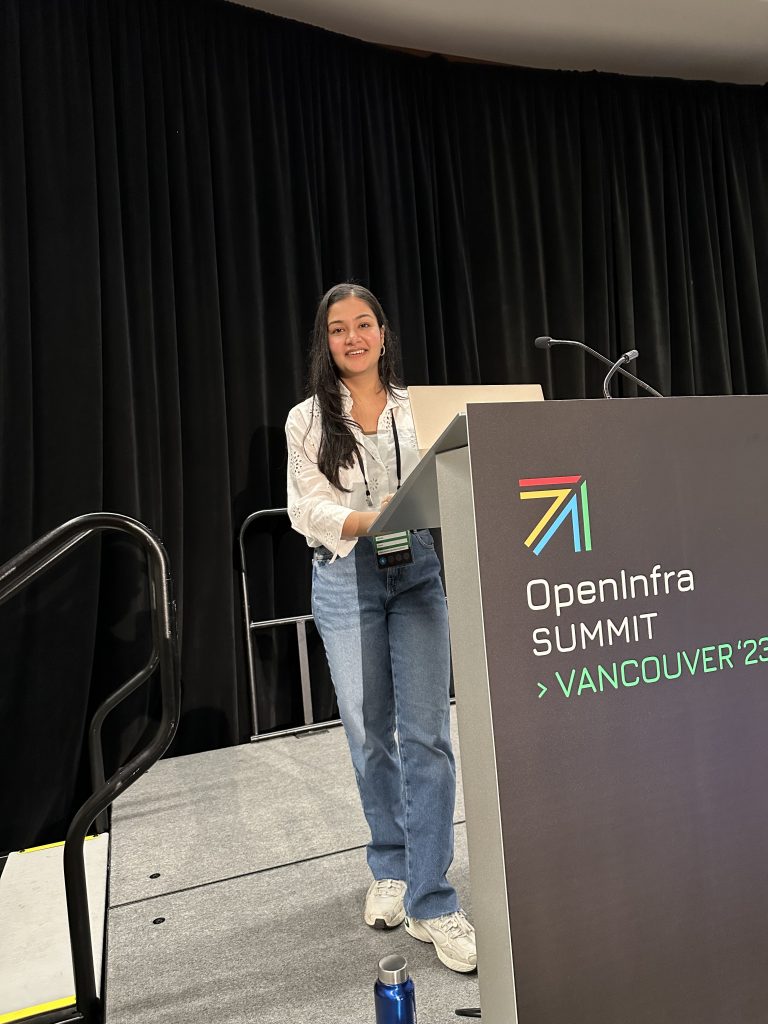
As a newcomer to the OpenInfra Summit, I entered a world pulsating with innovation and camaraderie. Surrounded by pioneers and thought leaders, I eagerly soaked in many insights and revelations. Here’s a snapshot of my personal highlights.
One of the more interesting sessions, for me, was by a Samsung SDS representative who highlighted the challenges and solutions in spreading a logical cloud across multiple availability zones and regions. The most exciting part was how they moved the control plane into Kubernetes to ease horizontal scaling and resiliency. They also highlighted the challenges of stretching Ceph through replication. The gist was: Only scale identity across all entities and keep the rest of the API services “local.”
I also explored the potential of private 5G campus networks. The spotlight was on StarlingX, demonstrating its impressive ability to enable rapid scaling into largely isolated regions. The talk was lean on detail but rich in implications, particularly around automation, standardization, and ease of use.
I dove into the secure world of Kata Containers. As a technology that promises complete isolation on each compute node, this technology stands out as a strong fortress, potentially a game-changer, for our compliance-centric clients.
Amidst this high-octane tech fest, a thought-provoking conversation about intentional and clear contributions to open-source projects offered a refreshing change of pace. The takeaway message was loud and clear: we need more focused efforts in the open-source realm!
Another refreshing and noteworthy event was a Diversity & Inclusion Lunch. This informal meet-and-greet allowed an open discourse about equality and diversity. The optimistic undercurrent of growing female representation and cultural diversity was heartening, promising a more inclusive future for the tech industry.
OpenInfra Summit 2023 painted a hopeful picture of a secure, inclusive future teeming with innovation.
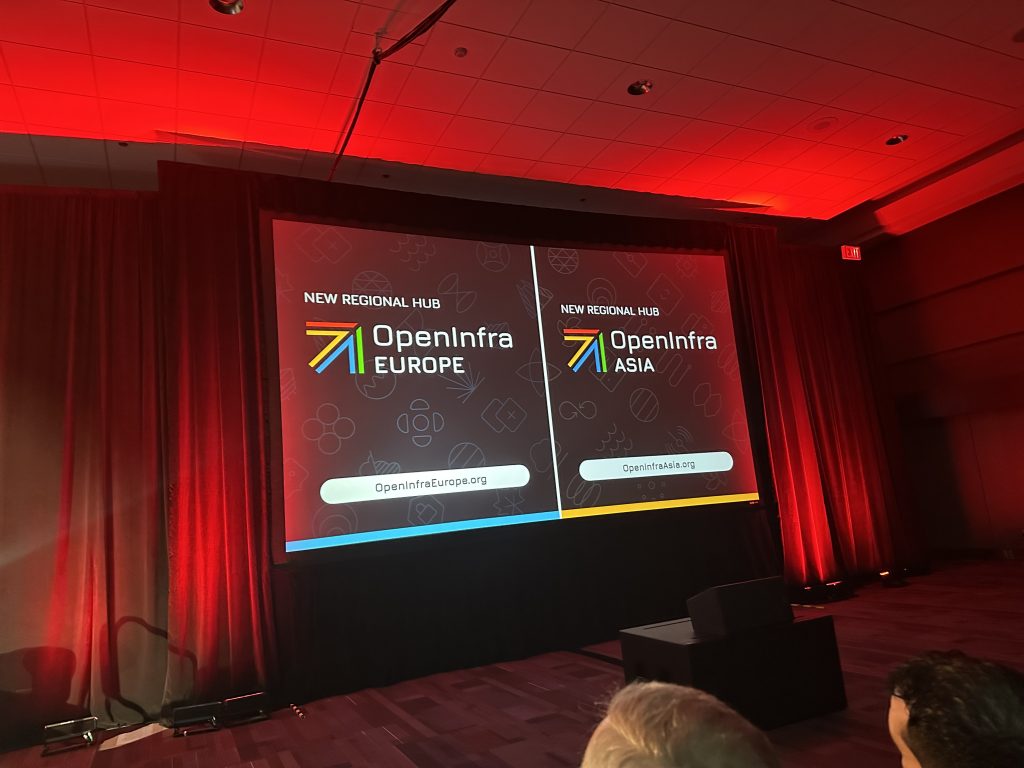
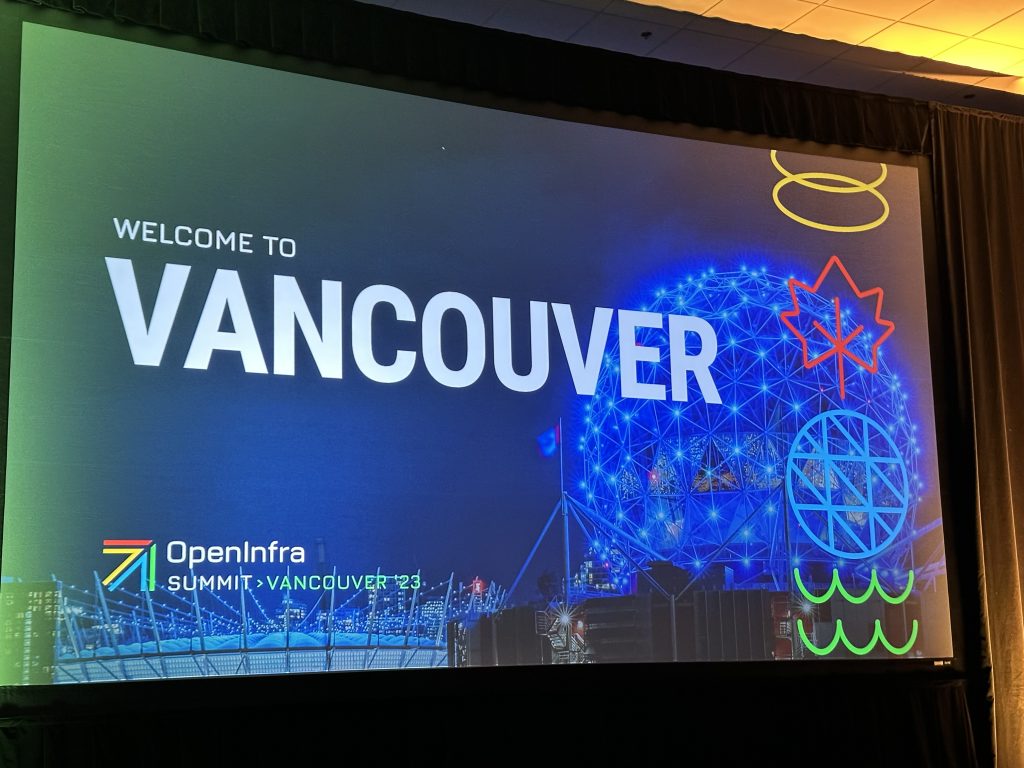
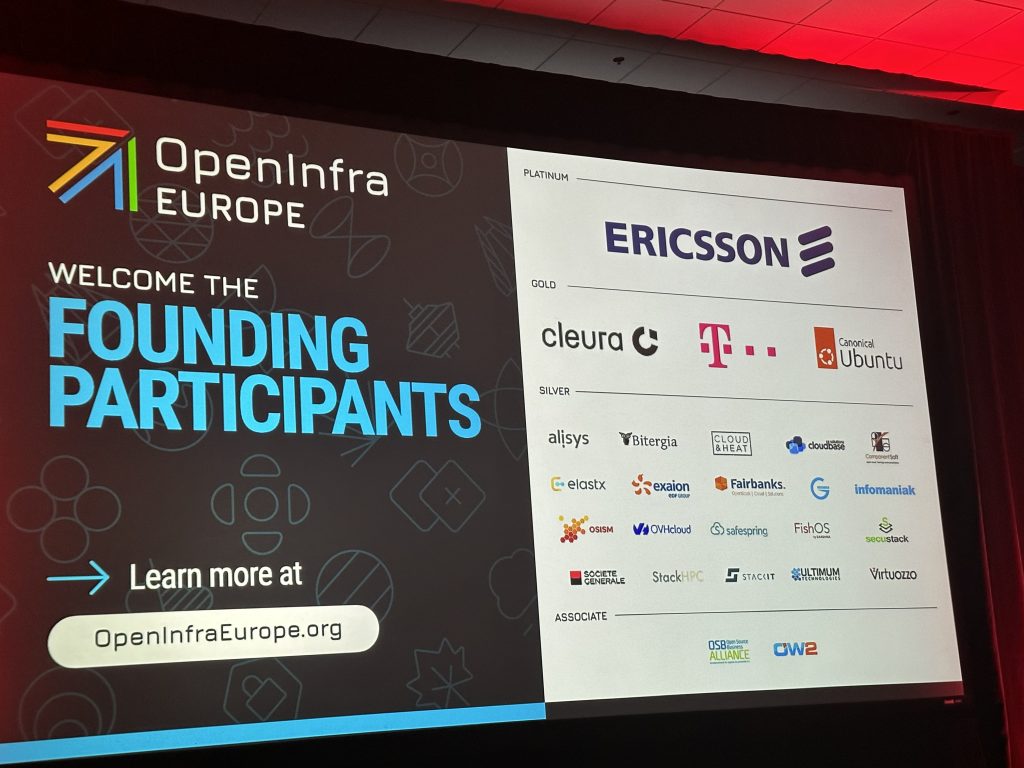
As always, the big topic on everyone’s lips was the importance of openness and inclusiveness. And you could feel it; the OpenInfra community is changing as fewer folks showed up at the main Summit, but the local meetups are buzzing more than ever. I’m excited to see how the new OpenInfraEurope and OpenInfraAsia groups will shake things up.
Here are a few of my personal highlights and thoughts from the past week.
- Every other talk seemed to be about Kubernetes and OpenStack and how to leverage the two projects together in some new way. Rather than being about Kubernetes running on OpenStack, the community is now integrating Kubernetes right into Openstack’s DNA which is fantastic and something we need to be part of.
- There’s a lot of chatter about digital sovereignty, security, and all that compliance stuff. Everyone around us gets it now, and we, as in Cleura, certainly got the driver’s seat on that topic.
- Europe and Asia seem to be the new home turfs for OpenInfra and OpenStack as the spotlight shifts from North America.
- Sure, there were fewer faces at the yearly event, but it felt more intimate. And OpenStack is still growing strong, with people investing in it more than ever. It’s a great time to jump on board!
OpenStack is all grown up these days. We’re seeing fewer flashy new features, and now it’s time to take care of all the maintenance work. Keeping everything running smoothly will be our next big challenge, especially for some non-core projects and tools.
Namrata and Damian knocked their presentations out of the park at the event, and Tobias and Dmitry were right in the thick of it all. Our folks from Cleura did a fantastic job representing our company and interacting with the community.
The bottom line, we’re making a name for ourselves in the OpenInfra world. Not just as a company but as people who genuinely care about the community. Seeing the recognition and appreciation for our approach – not just selling something but being an integral part of the community is incredible.
